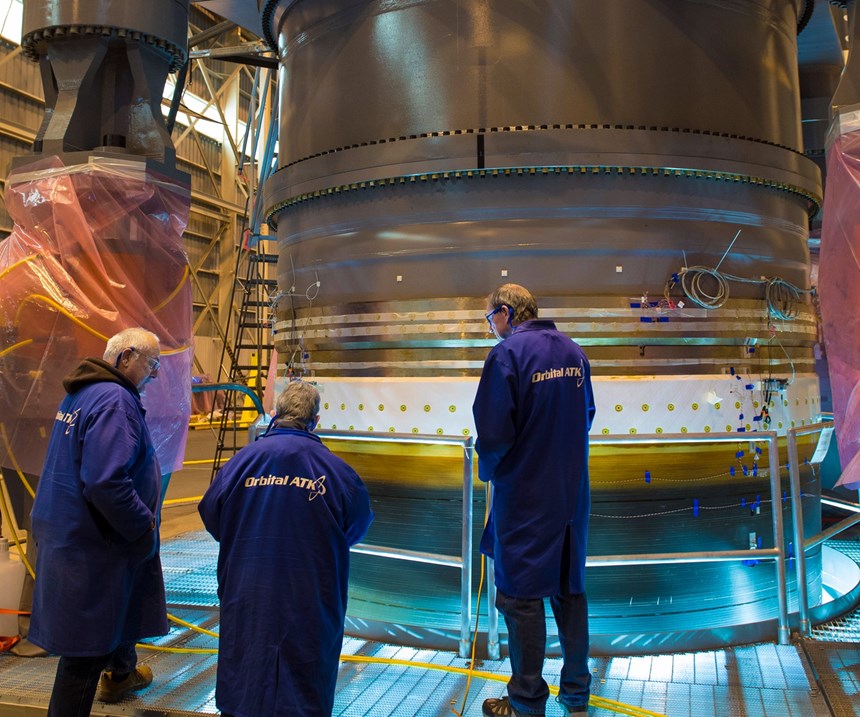Orbital ATK tests motor case for next-gen launch vehicle
The high-strength composite case for the Next Generation Launch system passed operating pressure and compression/tensile line loads.
Orbital ATK (Dulles, VA, US) reported on Nov. 7 that it has successfully completed an important milestone in developing advanced solid rocket propulsion and other technologies to be used in a new generation of intermediate- and large-class space launch vehicles. The company is in early production of development hardware for its Next Generation Launch (NGL) system, and on Oct. 27 successfully completed the structural acceptance test on the first motor high-strength composite case for this program.
The applied structural loads during the test demonstrated more than 110% of maximum expected motor operating pressure and 110% of operational/flight and pre-launch compression/tensile line loads. This full-scale motor case segment will be cast with inert solid rocket propellant in early 2018 and shipped to the launch site for check-out of ground operations.
“NGL is one of Orbital ATK’s top growth initiatives,” says Scott Lehr, president of Orbital ATK’s Flight Systems Group. “This milestone clearly shows the progress being made by the hundreds of engineers and technicians in Utah and Arizona who are developing the NGL system.”
Orbital ATK’s NGL rocket family will be capable of launching the entire spectrum of national security payloads, as well as science and commercial satellites that are too large to be launched by the company’s current Pegasus, Minotaur and Antares space launch vehicles. The NGL vehicles will share common propulsion, structures and avionics systems with other company programs, including smaller space launch vehicles as well as missile defense interceptors, target vehicles and strategic missile systems.
“By sharing a skilled workforce, facilities and subsystems across multiple programs, we’ve designed NGL to be affordable and reliable,” says Lehr. “For example, NGL uses common avionics that have flown on more than 100 missions with 100% success.”
The next phase of the program is expected to begin when the Air Force awards the Launch Services Agreement in mid-2018, which would entail full vehicle and launch site development, with work taking place at company facilities in Promontory and Magna, UT, US; Iuka, MS, US; Chandler, AZ, US; Kennedy Space Center, FL, US; and Vandenberg Air Force Base, CA, US.
Related Content
-
Thermoplastic composites welding advances for more sustainable airframes
Multiple demonstrators help various welding technologies approach TRL 6 in the quest for lighter weight, lower cost.
-
A new era for ceramic matrix composites
CMC is expanding, with new fiber production in Europe, faster processes and higher temperature materials enabling applications for industry, hypersonics and New Space.
-
Novel dry tape for liquid molded composites
MTorres seeks to enable next-gen aircraft and open new markets for composites with low-cost, high-permeability tapes and versatile, high-speed production lines.



















